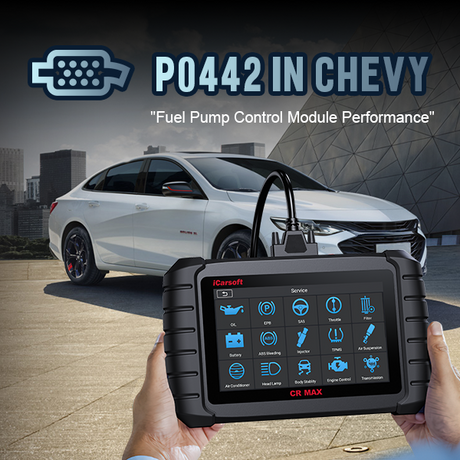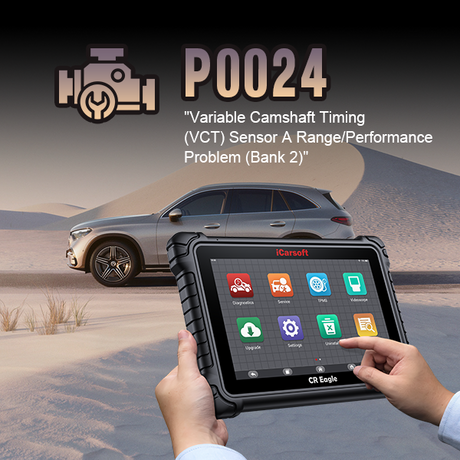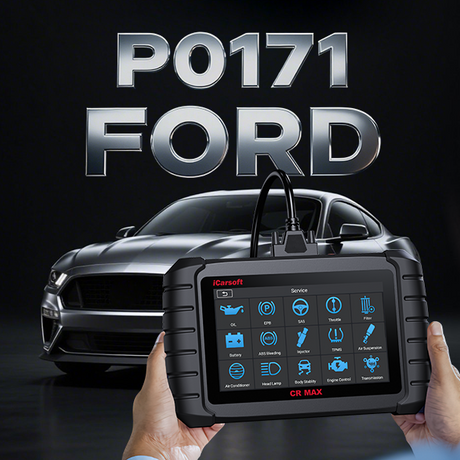Table of Contents
- 1. The meaning of the P0183 code
- 2. Possible causes of the P0183 code
- 3. Common symptoms of the P0183 code
- 4. Which vehicles can trigger the P0183 code?
- 5. Severity of the P0183 Code
- 6. Can I still drive after the P0183 code appears?
- 7. How to solve the problem of the P0183 code yourself?
- 8. How to diagnose the P0183 code?
- 9. How much does it cost to repair the P0183 code in the United States?
- 10. How to clear the P0183 code?
- 11. How to prevent the occurrence of the P0183 error code?
- 12. Other considerations about the P0183 code
- 13. How to Choose a Diagnostic Tool?
In modern automotive technology, OBD2 (second-generation onboard diagnostic system) plays a vital role. It not only monitors vehicle performance in real time, but also generates specific fault codes when a fault occurs, helping technicians quickly locate and solve the problem. Among them, the P0183 code is a common one in the OBD2 system. This article will analyze the meaning, possible causes, common symptoms, triggering models, severity, solutions, diagnostic methods, repair costs, clearing methods and preventive measures of the P0183 code in detail.
1. The meaning of the P0183 code

The P0183 code stands for "Fuel Temperature Sensor A Circuit High". In the OBD2 system, each fault code consists of a letter and four digits. Among them, "P" stands for the powertrain system, "01" indicates a specific fault category (fuel and air metering/injection control system), and "83" is a specific fault code. This means that the problem occurs in the circuit of the fuel temperature sensor A, and the detected voltage is higher than the normal range.
2. Possible causes of the P0183 code
The P0183 code may be caused by the following reasons:

- Fuel temperature sensor failure: The sensor may not accurately measure the fuel temperature due to aging, damage or contamination.
- Circuit problems: The circuit connected to the sensor may have problems such as open circuit, short circuit or excessive resistance, resulting in abnormal voltage.
- Electronic control unit (ECU) failure: Although less common, problems with the ECU itself may also cause false alarms of the P0183 code.
3. Common symptoms of the P0183 code
When a vehicle has a P0183 code, it may exhibit the following symptoms:
- Degraded engine performance: Because the fuel system cannot accurately control the fuel temperature, the engine may not be able to fully perform its performance.
- Deteriorated fuel economy: Incorrect fuel temperature may cause increased fuel consumption.
- Check engine light is on: The OBD2 system will detect a fault and illuminate the check engine light on the dashboard.
- Possible starting difficulties: In extreme cases, excessively high fuel temperatures may cause the fuel pump or injector to fail, which in turn affects starting.
4. Which vehicles can trigger the P0183 code?
The P0183 code applies to all vehicles equipped with the OBD2 system, regardless of make, model, or year. As long as the vehicle is equipped with a fuel temperature sensor, and the sensor or its circuit fails, the P0183 code may be triggered.
5. Severity of the P0183 Code
The P0183 code usually indicates a moderate to severe fault. Although the vehicle may still be able to drive, long-term abnormal fuel temperature may cause engine performance degradation, poor fuel economy, and even damage to key components such as fuel pumps or injectors.
6. Can I still drive after the P0183 code appears?
Although the vehicle may still be able to drive after the P0183 code appears, it is recommended to repair it as soon as possible. Because incorrect fuel temperature may cause long-term damage to the engine.
7. How to solve the problem of the P0183 code yourself?
For non-professionals, it may be difficult to solve the P0183 code by yourself. Because professional tools and techniques are required to diagnose and solve the fuel temperature sensor fault. It is recommended to use professional car diagnostic tool for detailed fault detection and location, and seek the help of professional technicians.
8. How to diagnose the P0183 code?
Diagnosing the P0183 code usually requires the use of a professional OBD2 scanner or professional car diagnostic tool. The technician will connect the scanner to the vehicle's OBD2 interface, read the fault code, and view the real-time data of the fuel temperature sensor. In addition, voltage tests, resistance tests, and circuit continuity checks may be required to determine the specific cause of the fault.
9. How much does it cost to repair the P0183 code in the United States?
The cost of repairing the P0183 code varies depending on the model, cause of the fault, and region. Generally speaking, the cost of replacing the fuel temperature sensor may range from a few hundred dollars to a thousand dollars. If the fault involves a more complex circuit problem or ECU failure, it may require a higher repair cost. It is recommended to consult a local repair shop or dealer for an accurate quote.
10. How to clear the P0183 code?
After resolving the fault and replacing or repairing any damaged parts, the P0183 code should be cleared using a professional OBD2 scanner or professional car diagnostic tool. It is important not to simply clear the fault code by disconnecting the negative terminal of the battery, as this may cause the vehicle control module to lose its "experience memory" and affect performance.
11. How to prevent the occurrence of the P0183 error code?
Preventing the occurrence of the P0183 error code requires regular vehicle care and maintenance. This includes checking the cleanliness of the fuel system, replacing aging sensors and components, maintaining the integrity and sealing of the circuit, etc. In addition, using high-quality fuels and additives can also help reduce contamination and wear of the fuel system.
12. Other considerations about the P0183 code
- Timely repair: Once the P0183 code is found, it should be repaired as soon as possible to avoid potential engine damage and performance degradation.
- Professional repair: For complex problems such as fuel temperature sensor failure, it is recommended to seek the help of professional technicians to ensure accurate diagnosis and efficient repair.
- Follow the guidance: When clearing the fault code, it is important to follow the specific guidelines of the vehicle manufacturer to avoid unexpected consequences.
- Record the repair history: Keeping detailed repair records can help track the root cause of the problem and provide reference when problems arise in the future.
13. How to Choose a Diagnostic Tool?
When purchasing an OBD2 diagnostic tool, you should consider the following factors:
- Brand and quality: Choose a well-known brand and reliable quality products to ensure accuracy and reliability.
- Functional requirements: Choose an OBD2 scan tool with appropriate functions according to the vehicle model and repair needs. For example, some advanced tools may support more car models and more detailed diagnostic information.
- Budget: Choose a suitable OBD2 scan tool according to your budget. Prices vary depending on brand, function, and quality.
- User reviews: Check other users' reviews and feedback to understand the performance and ease of use of the product.
iCarsoft FD V1.0 is a professional car diagnostic tool designed for Ford (USA, Europe, Australia) and Holden models. The device supports comprehensive fault diagnosis, can read and clear fault codes, and provides real-time data stream monitoring to help users quickly identify and solve vehicle problems. iCarsoft FD V1.0 also has a variety of reset service functions, such as oil reset and electronic parking brake maintenance, to ensure optimized vehicle performance. Its 4.0-inch TFT LCD display is easy to operate and suitable for home and professional technicians, making it an ideal choice for maintaining Ford and Holden models.
Learn More About iCarsoft Diagnostic Tools
In short, the P0183 code is a fault code that needs to be taken seriously. By understanding its meaning, possible causes, common symptoms, as well as diagnosis and solutions, we can better maintain the performance and reliability of our vehicles. When encountering such problems, it is recommended to contact a professional repair technician as soon as possible for detailed inspection and repair.















